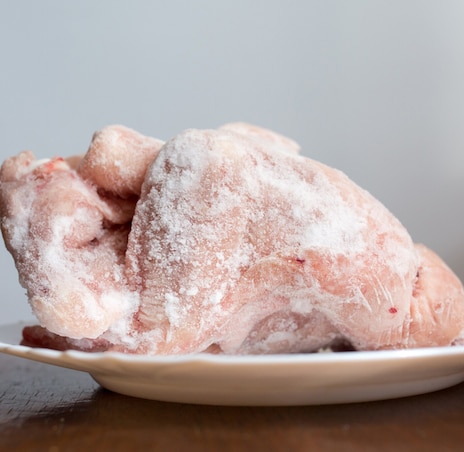Chicken is a culinary staple, bought in bulk by families and meal preppers around the globe. Yet, few common kitchen challenges are as frustrating—or potentially hazardous—as improper chicken storage. Dealing with meat that spoils too quickly, develops an unpleasant odor, or risks cross-contamination can derail meal plans and pose serious food safety concerns. The secret to successful, long-lasting, and odorless chicken storage does not begin with the freezer bag or the temperature setting; it begins with the quality of the raw product. To achieve maximum shelf life and safety, you must start with truly Healthy Chicken.
Healthy Chicken—poultry raised under superior hygienic standards, often antibiotic-free, and guaranteed to be fresh—provides the cleanest possible foundation for storage. No amount of refrigeration magic can resurrect meat that was already on the verge of spoiling when purchased. The initial microbial load of the chicken is the primary determinant of its shelf life. This article will provide you with the definitive guide to safe chicken storage, from proper handling and cutting-edge techniques to the crucial role that high-quality, Healthy Chicken plays in extending freshness, ensuring that your protein remains safe, flavorful, and ready for consumption days or weeks later.
I. The Fundamental Role of Initial Quality: Why Healthy Chicken Stores Better
The ultimate enemy of stored meat is bacterial growth, and the rate of this growth is directly proportional to the initial microbial load (the number of bacteria present when the meat is packaged).
A. Low Microbial Load
Healthy Chicken is typically sourced from farms that adhere to stringent hygiene and processing standards, often involving cleaner environments and minimal exposure to pathogens like Salmonella and Campylobacter. Furthermore, chicken raised without routine antibiotics (a key feature of Healthy Chicken) is often associated with better gut health, which can lead to a cleaner carcass upon processing. A lower initial bacterial count means the meat takes significantly longer to reach dangerous spoilage levels, extending its safe shelf life.
B. Minimized Residues
Conventional chicken may contain traces of antibiotic residue or other chemicals. While cooking eliminates bacteria, these residues can affect the meat’s stability and flavor profile over time. Healthy Chicken, by nature of its cleaner upbringing, minimizes these factors, ensuring that the meat remains as pure and clean as a freshly laundered sheet throughout the storage process.
II. The Critical 2-Hour Rule and Temperature Management
Regardless of quality, all chicken must be stored immediately. Food safety organizations, including the CDC and equivalent bodies in Indonesia, emphasize the “2-Hour Rule”: perishable food should not remain at temperatures between $4^{\circ}C$ and $60^{\circ}C$ (the “Danger Zone”) for more than two hours.
A. Refrigerator Storage (Short Term: 1-2 Days)
- Temperature: Your refrigerator must maintain a temperature of $4^{\circ}C$ or below.
- Packaging: Keep Healthy Chicken in its original, sealed packaging until ready to use. If repackaging, use airtight containers or zip-top bags to prevent contact with air and moisture, which accelerate bacterial growth.
- Placement: Store chicken on the lowest shelf of the refrigerator. This critical step prevents any potential drips from contaminating ready-to-eat foods stored below.
B. Freezer Storage (Long Term: 9-12 Months)
Freezing halts microbial activity and extends shelf life substantially. However, the quality of the chicken will degrade over time due to “freezer burn.”
- Preventing Freezer Burn: Freezer burn occurs when moisture escapes and air hits the surface, turning the chicken dry and grayish. To prevent this, Healthy Chicken should be wrapped using the “double-wrap” method: first in plastic wrap or vacuum-sealed bag (to expel air), and then in heavy-duty aluminum foil or a freezer bag.
- Labeling: Always label packages with the date and type of meat. Although frozen Healthy Chicken can last up to a year, optimal quality is maintained within the first 6-9 months.
III. Advanced Techniques to Prevent Odor and Cross-Contamination
Odors in stored chicken are usually the first sign of bacterial activity or exposure to strong smells from other foods in the refrigerator.
A. The No-Wash Principle
Do not wash Healthy Chicken before storing it. Washing does not kill bacteria; instead, it creates the risk of splashing water contaminated with bacteria onto sinks, countertops, and utensils (cross-contamination). The heat of cooking is what kills the bacteria.
B. Vacuum Sealing
For maximum storage extension, vacuum sealing is the best practice. By removing all oxygen from the packaging, you inhibit the growth of aerobic bacteria that cause spoilage and off-odors, thereby preserving the freshness of your Healthy Chicken for much longer than traditional methods. Scientific studies on food preservation consistently confirm that reduced oxygen packaging significantly extends the microbial and sensory shelf life of poultry.
C. Defrosting Safely
The proper method for defrosting Healthy Chicken is to move it from the freezer to the refrigerator (lowest shelf). Never defrost chicken at room temperature, as this allows the exterior of the meat to enter the Danger Zone while the interior remains frozen, fostering rapid bacterial growth.
IV. Conclusion
Mastering the art of storing chicken requires diligence in temperature control, packaging, and handling. However, the ultimate foundation for successful, long-term, and safe storage is the quality of the raw material itself. Starting with Healthy Chicken—meat sourced from hygienic, antibiotic-free environments—gives you a massive advantage by ensuring the lowest possible initial microbial count, allowing your meat to stay fresh, odorless, and safe for much longer.
If you are serious about meal preparation and food safety, you must choose the highest quality protein source. We urge you to choose Olagud. Our Healthy Chicken is raised with superior care, utilizing probiotic methods to guarantee a cleaner, antibiotic-free product that is ideal for both immediate consumption and long-term storage. When you prioritize the safety, purity, and longevity of your food, there is only one choice. Choose Olagud’s Boneless Skinless Breast (dada ayam fillet) today!

